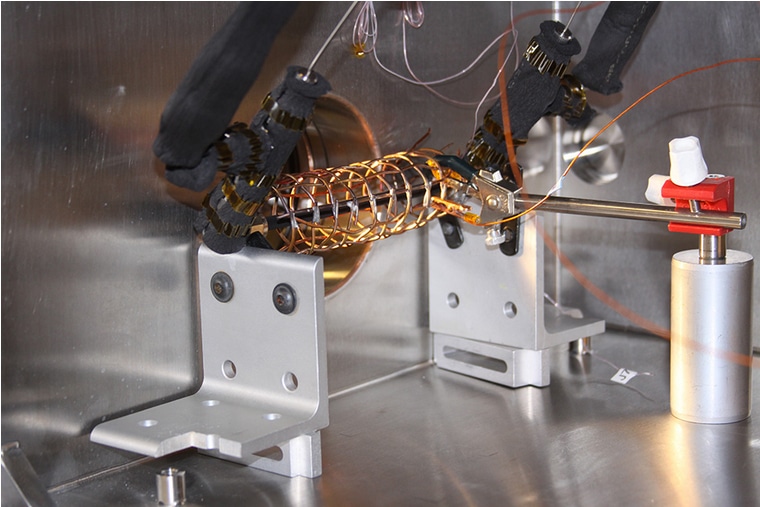
The application of an electric field to a condenser could double the efficiency of surface heat transfer in power plant and high performance computing cooling systems, according to new research released by scientists at MIT.
The discovery—made by MIT postdoc Nenad Miljkovic, associate professor of mechanical engineering Evelyn Wang, graduate student Daniel Preston, and former postdoc Ryan Enright—builds upon previous research completed last year, in which the team found that a superhydrophobic surface produced via a specific nanopatterning of condenser surfaces caused water droplets to combine and leap from those surfaces as the result of a release of excess surface energy. According to the researchers, the phenomenon improved the efficiency of heat transfer from condenser surfaces by 30 percent.
Upon further examination, the team also noticed that the water droplets acquired a positive electric charge as they jumped away.
“We found that when these droplets jump, through analysis of high-speed video, we saw that they repel one another midflight,” Miljkovic said. “Previous studies have shown no such effect. When we first saw that, we were intrigued.”
This serendipitous revelation led to a new discovery published in the journal ACS Nano. By grounding the condenser surface and applying a negative voltage to a wire mesh tube surrounding it, researchers were able to attract the leaping droplets away from the surface and toward the mesh, preventing pressure from the surrounding water vapor from pushing some of the droplets back onto the condenser surface.
According to Miljkovic, the readhesion of the droplets to the condenser surface can reduce heat transfer performance and cause water- and even ice-buildup in freezing conditions. The application the electric field drastically reduces these issues and, when combined with the nanopatterned surface, leads to an almost 200 percent increase in heat transfer efficiency compared to current commercial condenser surfaces.
Known as “electric-field-enhanced condensation,” the new method could decrease the amount of energy and maintenance required to run commercial refrigeration units and improve the efficiency of advanced condensation-based cooling systems, such as the vapor chambers and heat pipes used in some advanced computing systems, Miljkovic said. It could also enhance the performance of self-cleaning surfaces, because any dust or dirt particles on the surface would be removed by the droplets as they leap away.
The research was funded by the U.S. Department of Energy through the MIT Solid-State Solar-Thermal Energy Conversion Center, the Office of Naval Research and the National Science Foundation.






